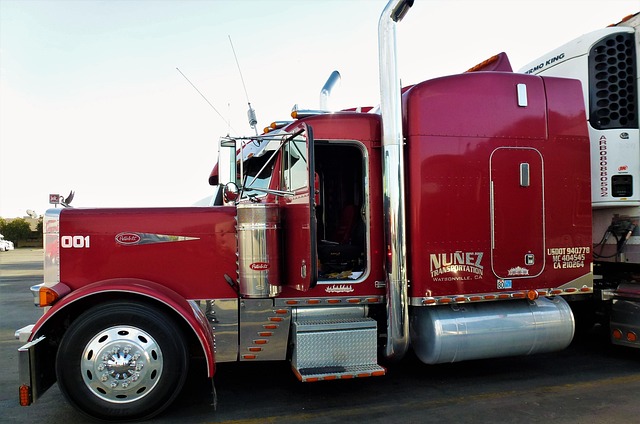Looking to register your car in California? This comprehensive guide breaks down the process step-by-step. From understanding key requirements to navigating the crucial VIN (Vehicle Identification Number) verification, you’ll learn what’s needed to ensure a smooth registration experience. Gather essential documents, prepare for the check, and discover how to submit an application with accompanying fees to the DMV. Discover everything from start to finish, including receipt of your California Registration Certificate, ensuring compliance and peace of mind on California’s roads.
- Understand California Car Registration Requirements
- Gather Necessary Documents for VIN Verification
- Perform Vehicle Identification Number (VIN) Check
- Submit Application and Fees to DMV
- Receive Your California Registration Certificate
Understand California Car Registration Requirements

Before registering your car in California, it’s crucial to understand the state’s specific requirements for vehicle registration. One key aspect is ensuring accurate and up-to-date information, which includes a thorough vin verification process. The Vehicle Identification Number (VIN) serves as a unique identifier for your car, and its accuracy is vital during registration. A mobile vin verifier or inspector can facilitate this process by confirming the VIN’s legitimacy and history through digital means, streamlining the registration experience.
California requires all vehicles, regardless of age, to undergo a comprehensive inspection to meet safety standards. This involves checking critical components like brakes, lights, tires, and emissions systems. Additionally, proof of insurance is mandatory when registering your vehicle. A mobile vin inspection service can aid in this process by providing on-site assessments, making the registration procedure more convenient and efficient for California residents.
Gather Necessary Documents for VIN Verification

To initiate the car registration process in California, you’ll need to gather several crucial documents for VIN (Vehicle Identification Number) verification. This step is essential as it ensures that your vehicle meets all legal standards and identifies its unique characteristics. Among the key documents required are the title or certificate of ownership, which confirms your authority over the vehicle; a valid registration from the previous state, if applicable; and proof of insurance indicating adequate coverage for your car.
Additionally, you’ll need to have a mobile VIN verifier or scanner readily available. This tool facilitates the quick and efficient mobile vin verification process by scanning the VIN and retrieving critical vehicle data from specialized databases. Many services offer this mobile vin inspection option, making it convenient for California residents to complete their registration without unnecessary delays.
Perform Vehicle Identification Number (VIN) Check

Before registering your car in California, performing a Vehicle Identification Number (VIN) check is a crucial step. This process involves verifying the VIN’s accuracy and authenticity, which ensures that the vehicle matches its listed information. You can conduct this vin verification through various methods, including using a trusted mobile vin verifier or conducting a simple visual inspection of the vehicle’s frame and identification plate.
A mobile vin inspection is particularly convenient for many California residents. With just a few clicks on your smartphone, you can access reliable online tools that provide instant vin reports, offering peace of mind and simplifying the registration process. These mobile vin verifiers are designed to cross-check your vehicle’s information against vast databases, enabling accurate identification and saving time during car registration.
Submit Application and Fees to DMV

To officially register your car in California, you’ll need to submit an Application for Title and Registration (Form DV305) along with all required fees to the Department of Motor Vehicles (DMV). Before submitting your application, ensure that your vehicle has passed the necessary emissions test and you have a valid, current registration from your previous state of residence.
A crucial step in this process is the vin verification. You can conveniently complete this using a mobile vin verifier or even conduct a mobile vin inspection to obtain your vehicle identification number (VIN) data. This information will be needed on your application form. Additionally, gather all essential documents such as proof of insurance, ownership records, and any applicable fees for title transfer or new registration. Once your application is complete, submit it along with the required fees at a local DMV office, or consider using their online services for a more efficient process.
Receive Your California Registration Certificate

After submitting your application and relevant documents, it’s time to receive your California Registration Certificate. This official document confirms that your vehicle is legally registered in the state. To ensure everything is in order, many individuals opt for a vin verification process. A mobile vin verifier can perform this inspection conveniently at your location, checking the vehicle identification number (VIN) against state records to verify ownership and ensure there are no outstanding issues. Alternatively, you can conduct a vin inspection yourself by consulting the California DMV’s online database or visiting a local office.
Registering a car in California involves understanding specific requirements, gathering essential documents, and completing a VIN verification process. By following these steps, from performing the necessary VIN check to submitting applications and fees at the DMV, you’ll be on your way to receiving your California registration certificate. This ensures legal compliance and seamless operation of your vehicle within the state’s regulations.



